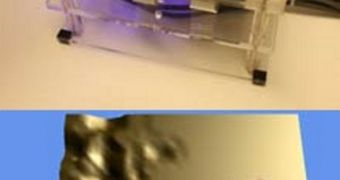For the past two decades, people using computers have been blessed and cursed to use mice and keyboards in order to input information into their machines. Over the years, these two components evolved to fulfill more and more complex tasks, but, for various types of applications, they simply no longer cut it. Drawing, sculpting or modeling in three dimensions, or using music programs becomes increasingly difficult to do, which is one of the main reasons all types of artists shun away from using their computers to make art. Now, Microsoft is working on making other types of input devices and interfaces a reality, Technology Review reports.
The software giant is naturally not the first company to have ever attempted something radically new. From research labs around the world, things such as multi-touch and motion-sensing appeared that fulfilled their advertised tasks quite nicely. But now Microsoft wants to create interfaces that can be squashed, stretched, rolled, or rubbed. All these possibilities could give people a higher degree of control over their machines, as well as an intuitive way of doing so. The company has already created one, which makes use of so-called sensor tiles to pick up on the movements people using it make.
The tiles produce numerous magnetic fields, which surround the entire surface of the interface. This allows the system to detect when a disruption occurs in the field, such as when a finger is moved above the surface. The Microsoft experts say that the changes in the magnetic fields are best made with a metal object, such as a bearing-like sphere. Additional input methods are also available for the new interface, they say. For example, in the near future, users could choose to manipulate a bladder filled with iron filings or a magnetic fluid, which could be modified into any shape they desire.
“In essence, these are modeled on an electric guitar setup. If you disrupt the field, this causes a current to be induced in the coil,” Microsoft Research Cambridge expert Stuart Taylor explains. He collaborated with Newcastle University colleague Jonathan Hook, as well as with other scientists from Microsoft, on the new investigation. Taylor is also investigating the idea of inducing physical effects in the new interface, which would allow it to induce a feedback sensation into the hands and fingers of a user. “It's an interesting concept which extends multi-touch to something more tangible,” University College London (UCL) Virtual Environments and Computer Graphics group leader and Professor Anthony Steed says of the idea.

 14 DAY TRIAL //
14 DAY TRIAL //